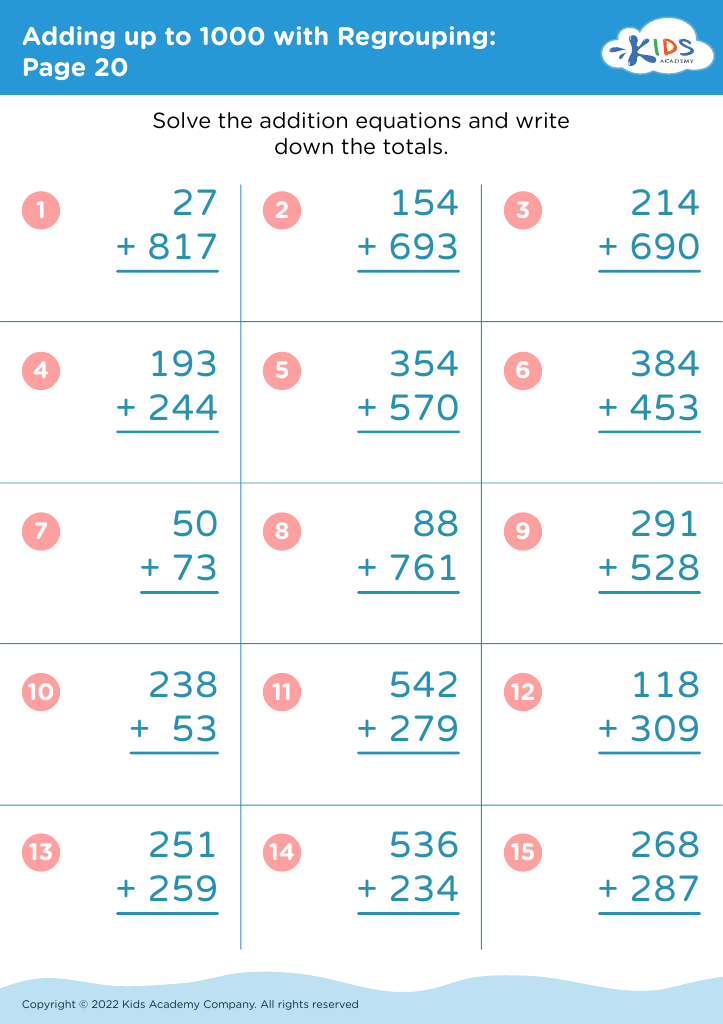Understand data Worksheets for Kids
1 filtered results
-
From - To
Question/Answer
What are some effective activities to train students’ Understand data skill when teaching them about Adding up to 1000 with Regrouping?
Effective activities include using base-ten blocks for hands-on practice, engaging in interactive games that simulate shopping scenarios requiring adding prices, implementing worksheets that gradually increase in difficulty, and utilizing digital tools that offer immediate feedback. Pairing students for collaborative problem-solving can also enhance understanding through discussion and explanation of strategies for adding numbers up to 1000 with regrouping.
Why is the Understand data skill important for Grade 2 students?
The Understand data skill is crucial for Grade 2 students as it lays the foundation for critical thinking and problem-solving abilities. It helps them interpret information, recognize patterns, and make informed decisions from an early age. Grasping these concepts early enhances mathematical understanding, supports academic success in numerous subjects, and prepares them for real-world situations involving data analysis and interpretation.
How to test a Grade 2 student’s Understand data skills?
To test a Grade 2 student's understanding of data skills, present them with simple charts or graphs (e. g. , bar charts, pictographs) based on familiar topics. Ask them to answer questions related to the data presented, such as identifying the most/least, comparing quantities, and basic addition or subtraction based on the data.













